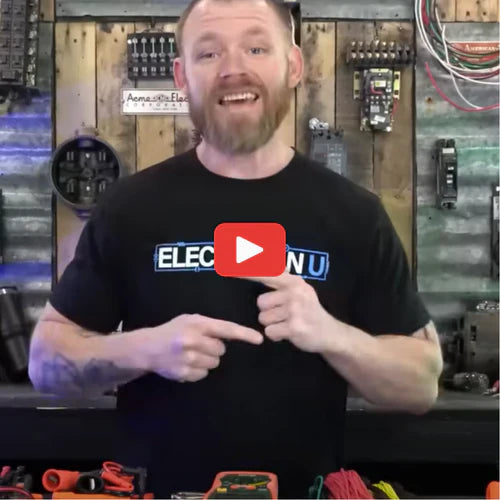Key Takeaways
- Introduction to unique test equipment and their uses
- Importance of fundamental test devices for electricians
- Klein's contribution to advanced tools in the field
Fundamental Test Equipment
Today, we cover some essential test equipment that might not be in your standard toolbag. Here's a breakdown of various practical tools that can streamline your work and improve safety.
One tool I always keep handy is a miniature voltage tester. Unlike a tick tracer, this device offers precise readings without misleading you, increasing your safety. It’s small enough to carry in your pocket, so you can quickly check voltages without hauling around your entire toolkit.
The Klein ET310 is a transmitter and receiver that makes identifying circuits a breeze. Plug in the transmitter, and use the wand to detect which breaker controls the plug. It’s a lifesaver when you’re dealing with complex electrical panels.
A thermal imager can revolutionize how you detect issues. Unlike standard thermometers, this device shows heat signatures on a display. You can scan conductors, breakers, or outlets and pinpoint hot spots that indicate potential problems.
Digital multimeters (DMMs) are crucial. They offer an array of settings for testing voltage, current, and resistance. A variant you might find useful is the clamp-on ammeter. It allows you to measure current without direct contact, ideal when dealing with bundled conductors.
Borescopes, equipped with a tiny camera and light, let you see into walls and conduits. This gadget is Bluetooth-enabled and connects to your phone, recording videos or taking snapshots, which is invaluable for documenting issues and planning repairs.
A megger, or megohmmeter, is another essential tool. It not only measures resistance but can also send high voltage signals through conductors to detect leakage or insulation failure. This is critical for ensuring the safety and integrity of wire installations, especially in underground conduits.
Lastly, an earth resistance tester, particularly a three-point fall of potential meter, measures the earth's resistance to electrical currents. Achieving 25 ohms to the ground is the goal, though it can be challenging depending on soil conditions. This tool helps ensure safe grounding for your installations.
These tools are just a glimpse into the specialized equipment that can make your electrical work more efficient and safer. Expand your toolkit, and you'll be prepared for any challenge in the field.

